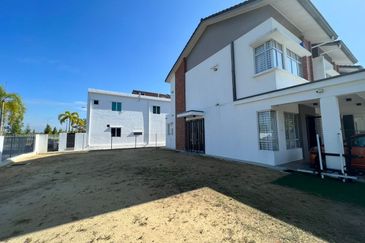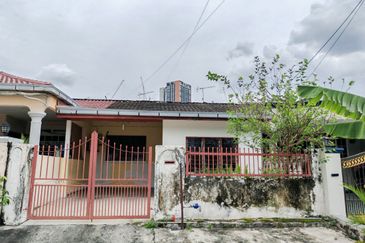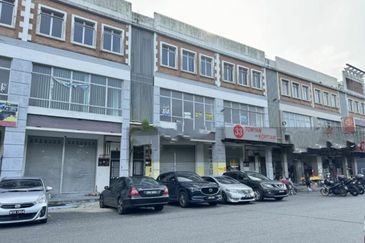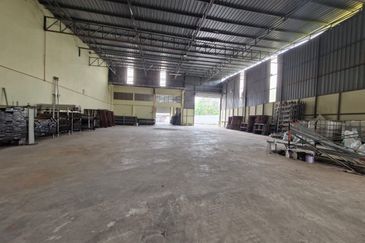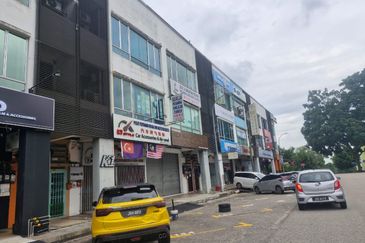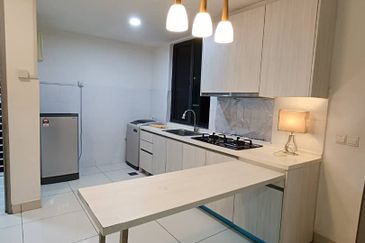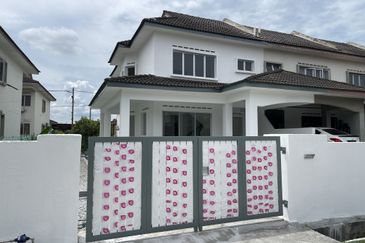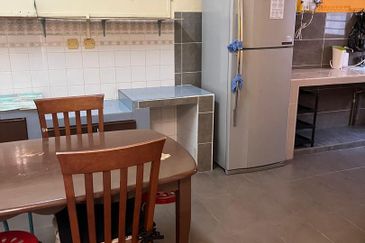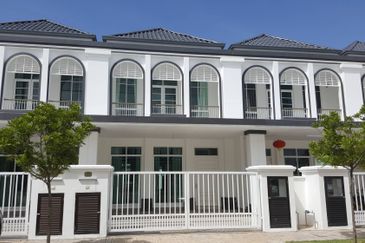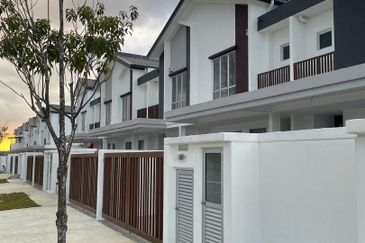
STEPPING into the grand lobby of Keio Plaza Hotel Tokyo, first-time visitors will be awed by its grandeur. The hotel has constantly upgraded its traditional yet modern Japanese-inspired interior to stay relevant in the country’s competitive hospitality market.
“Throughout the years, we have continued to renovate our facilities and invest in the hotel’s infrastructure to enhance the quality of our products and services. From 2003 to 2009, we allocated more than ¥10 billion (RM331 million) on renovating the restaurants and hotel facilities. Since then, we have invested in renovations every year,” shares deputy director of marketing Junko Saito.
Upon entering the hotel, one is greeted by a 2m-tall Arita porcelain flower vase and other highly decorated vases on display in conjunction with the hotel’s monthly art and culture exhibitions. They are on loan from Saga Prefectural Government Treasury and the Kyushu Ceramic Museums.
“It is our goal to share Japan’s traditional culture, such as art and cuisine, with our guests from all over the world,” says general manager Rikisaburo Kitajima, who has been with the hotel since 1987.



Saito concurs: “We want to represent Japanese culture, thus we are eager to introduce and promote Japanese artwork and traditions to our guests. We regularly feature Japanese cultural festivals and artworks.”
Established in 1971, Keio Plaza Hotel Tokyo has 1,437 rooms in two 47-storey towers. It offers different types of rooms, such as plaza premier, deluxe, superior and the new Hello Kitty rooms.
According to Saito, the rooms offer Hello Kitty-themed walls, beddings, toiletries and merchandise, and have become one of the hotel’s major draws since their introduction in 2014.
“Our target market is very diverse, as we have visitors from over 100 countries. They include the upper class, business executives, young families and couples,” says Kitajima.
The hotel has more than 25 restaurants and bars, 23 of which it directly operates. Seven of the traditional Japanese restaurants offer kaiseki cuisine and teppanyaki. The hotel also offers 39 banquet halls to hold all sorts of events.

Another major attraction of Keio Plaza Hotel Tokyo is its strategic location in the heart of Shinjuku, one of the busiest commercial districts in Tokyo. It is also near numerous major retailers such as its namesake, the Keio Department Store, as well as Isetan, Takashimaya, Marui Department Store and electronics store Yamada-Denki. Opposite the hotel is the breath-taking Tokyo Metropolitan Government Building, one of Shinjuku’s most important landmarks.
“Shinjuku Station, a major railway station in Tokyo, is a five-minute walk from the hotel, allowing our guests to explore different parts of Tokyo,” adds Saito. The massive station has more than 36 platforms.
With a long list of facilities and its excellent location, it is easy to understand why the hotel enjoyed an impressive occupancy rate of 85.9% in the financial year ended March 2015 (FY2015).
Growth in the hospitality market
Keio Plaza Hotel Tokyo is part of Keio Corp, one of the largest private railway operators in Japan. Set up more than 100 years ago, the group now comprises 46 companies covering real estate, hotels, bus services, department stores, golf courses and other businesses, explains Saito. In FY2015, the group achieved a revenue of about ¥408 billion.

Apart from Keio Plaza Hotel Tokyo, the Keio hotel group has two other hotels in Tokyo, Keio Plaza Hotel Tama and Keio Plaza Hotel Hachioji.
In FY2015, Keio Plaza Hotel Tokyo raked in ¥22.365 billion in revenue, with most of it coming from the rooms division (¥9.52 billion), followed by restaurants and bars (¥5.338 billion) and banquets (¥7.141 billion).
Revenue for Keio Plaza Hotel Tama and Keio Plaza Hotel Hachioji were ¥1.748 billion and ¥2.697 billion respectively.
The positive results are in tandem with the overall hotel industry in Tokyo, which is on the rise. Nonetheless, Savills Japan manager of research and consultancy Hafiz Ismail says the Japanese hotel market has plenty of room for improvement. “Japanese hotels have been struggling due to a number of factors, such as deteriorating facilities, ageing buildings and outdated IT/operation systems, compared with international brand hotels, which are usually located in newer, high-quality buildings and have efficient HR/revenue systems.”
He highlights several hotels that have addressed the situation. Hotel Okura Tokyo is rebuilding its 52-year-old main wing, targeting to reopen it in 2019. Then there is Hoshino Resort, which was one of the first Japanese hotel companies to adopt HR systems to improve their operational efficiency, explains Hafiz.
Overall, the occupancy rate in Tokyo hotels was at 85.1% as at June 2015, adds Hafiz. It dropped to its lowest level of 55% in March 2011, after the Tōhoku earthquake.
“We believe that the key driver is the government’s efforts to improve the tourism industry. In 2014, the country recorded over 13.4 million visitors, a year-on-year increase of 29%. We expect to see an even higher number this year. The government aims to achieve 20 million visitors by 2020. Examples of the government’s efforts so far are the easing of visa rules for most countries in Southeast Asia and the waiver of consumption tax on purchases,” he says.
Apart from the government efforts, the recent depreciation of the yen has attracted more tourists.
“Tourists from Asian countries made up 1.4 million of visitors for the year to April 2015. That is 82% out of the total 1.7 million tourists. The majority were from China (23%), Taiwan (19%), South Korea (17%) and Thailand (17%),” says Hafiz.
The influx of foreign tourists will create demand for accommodation. According to government statistics, Tokyo had 1,546 hotels (about 140,000 rooms) in April. By 2018, Tokyo will add 9,000 more hotel rooms.

Although Tokyo’s hospitality industry is doing fairly well, it has its fair share of challenges. “Based on our observations, the lack of workers is the main challenge. Uncompetitive wages is another reason the hotel sector is not on top of the list among workers in Tokyo. With the increasing number of hotels, operators will have problems finding adequate manpower,” says Hafiz. “Other potential challenges are a stronger yen and, of course, natural disasters.”
There are some emerging trends in Tokyo’s hotel market. “The positive outlook in the sector has attracted a lot of interest in the acquisition of hotels, which is currently dominated by Japanese real estate investment trust (REITs). Investors face challenges in finding hotel deals within Tokyo as the sellers are holding onto their assets.
“Some of the recent large transactions include Hoshino Resort’s purchase of four ANA hotels from Morgan Stanley. The hotels, located in Hiroshima, Fukuoka, Toyama and Ishikiwa prefectures, cost about ¥40 billion. Another acquisition is that of the 361-room Okinawa Marriott Resort and Spa by Japan Hotel REIT from Lone Star for ¥14.95 billion.
According to Savills Japan, the market outlook is positive. “The transaction volume in the hotel sector in Japan was about ¥316 billion in 2014, a significant 168% increase from 2011. However, the total transaction amount in the hotel sector was only about 5% of the total volume of all property sectors nationwide. The limited inventory is an issue that is commonly faced by investors. The capitalisation rates for hotel assets are compressing but there is convincing potential for growth. The supply is increasing and this is viewed as relevant as the current hotel stock is still insufficient,” says Hafiz.
Reaching the global market
Kitajima hopes Keio Plaza Hotel Tokyo will be able to ride on the success of the Tokyo 2020 Olympic and Paralympic Games. “Inbound tourism, being one of the country’s key economic strategies, is expected to grow. From last year, the number of foreign travellers have increased by up to 45%, which inevitably helps our hotel industry.
“About 70% of our guests are from overseas. There are several reasons for the increase in tourists, such as the weaker yen and easing of visa requirements. We wish to extend and continue this trend after the games, to improve our hotel industry and develop Japan as a tourism-oriented nation,” he adds.
“Inbound tourism is related to broad industries and has strong relationships with regional economies. The innovation in the hospitality business has a deep impact on the broad industries in Japan,” says Kitajima.
“Since 2014, our hotel been focusing on improving its public relations abroad. This is the first time that we are venturing into public relations and marketing overseas. We would like to achieve global recognition,” he concludes.
This article first appeared in property, a section of the digitaledge WEEKLY, on Aug 24, 2015. Subscribe here.
TOP PICKS BY EDGEPROP

D'Pristine Medini
Iskandar Puteri (Nusajaya), Johor
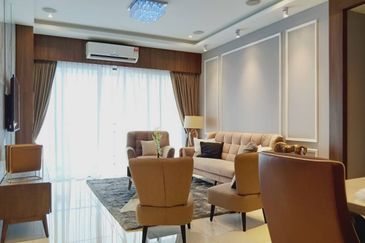
Royal Strand @ Country Garden Danga Bay
Johor Bahru, Johor

Vogue Suites 1 @ KL Eco City
Bangsar, Kuala Lumpur


